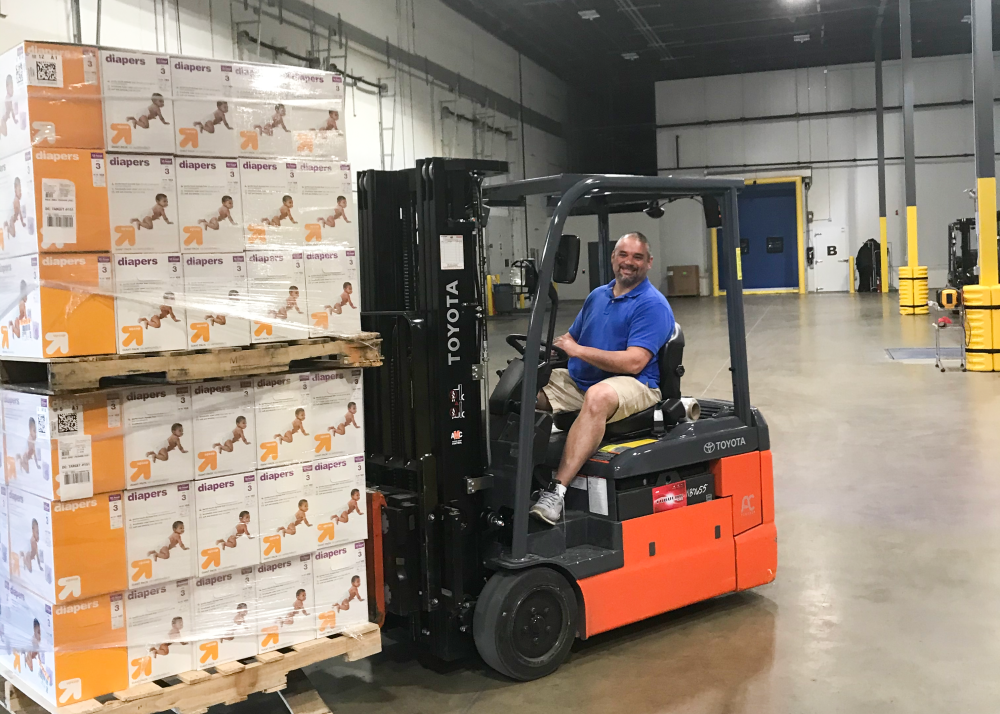
How Does a Trade War Impact a Food Bank?
As a food bank, we’re able to distribute nearly 120 million pounds of food to our community partners each year thanks to a number of programs and funding sources. Federal commodity programs run by the USDA make up a large part of our inventory, so international trade policies can have a significant impact on how we operate.
Federal commodity programs
Today’s commodity programs began in the 1933 Agricultural Adjustment Act (now known as the Farm Bill) in part “to create balance between the production and consumption of agricultural commodities.” Nearly 90 years later, these policies and programs now include the U.S. government buying food from farmers, much of it ending up at food banks to be distributed to people experiencing hunger. There are two primary commodity programs of relevance to hunger relief today:
The Emergency Food Assistance Program (TEFAP) enables the U.S. Department of Agriculture to purchase nutritious food and make it available to emergency food agencies like Second Harvest Heartland and our network of food shelves and community organizations.
Commodity Supplemental Food Program (CSFP) aims to improve the health of low-income seniors through monthly food boxes. In 2020, Second Harvest Heartland provided CSFP food boxes to more than 235 unique distribution sites in 41 counties in Minnesota, serving approximately 8,700 seniors each month.
Surplus commodities
When our country is in a trade conflict with another country, that can very often impact the economics and operations of the commodities that farmers produce. In the case of the recent trade war with China, increased tariffs meant American products were too expensive to sell to other countries, so farmers were left with surplus food. To make up for these lost markets, the U.S. Department of Agriculture increased how much food it was purchasing from farmers to reduce their hardships.
Influx of food donations
On top of the continuing trade war, this past summer saw U.S. farmers with extremely reduced markets due to the coronavirus, so while not always the case, this year the increased purchases of commodities was urgently needed to help battle COVID-era hunger. Like with commodity programs in less turbulent years, these products were distributed to food banks, quadrupling the amount of commodities we’d normally receive, and in a very short period of time.
Modified operations
Such a large and immediate increase in fresh, healthy food meant increased storage and transportation expenses, along with logistical challenges in quickly distributing food with a short shelf life. It was a welcomed challenge, of course, as it’s rare for food banks or food shelves to receive such volume of high-quality, high-nutrition foods, the kinds of foods that are in-demand for clients but often cost-prohibitive at the grocery store.
Uncertain future
That said, what’s most sought – by our food bank operations team, our farmers and donors who support us, our partners and the families they serve – is stability. Whether it’s a trade dispute or a global pandemic, the federal government has a role to play in providing stability. We understand that the commodity program levels we’re seeing today can’t last forever, but this cliff is coming at a time when the hunger-relief network faces unprecedented levels of need. As such, we’re asking our elected and appointed officials for a gradual tapering back to new normal levels, those that are determined based on health and nutrition needs of our communities who the USDA is charged with serving.
Federal commodity programs are just one of our many advocacy priorities in the fight to end hunger:
- From SNAP and food rescue to school meals and senior nutrition, read about our advocacy priorities.
- Follow us on Twitter for hunger-related activity from state and federal policymakers.
- Add your name to our growing list of hunger-fighting advocates.
